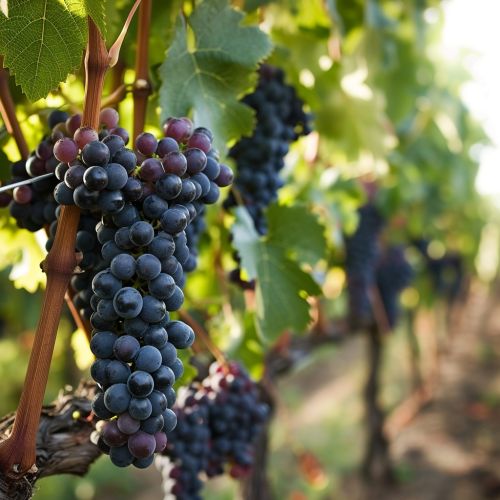Grape
Introduction
The grape is a fruit, botanically a berry, of the deciduous woody vines of the flowering plant genus Vitis. Grapes can be eaten fresh as table grapes or they can be used for making wine, jam, grape juice, jelly, grape seed extract, raisins, vinegar, and grape seed oil. Grapes are a non-climacteric type of fruit, generally occurring in clusters.
History
The cultivation of the domesticated grape began 6,000–8,000 years ago in the Near East. Yeast, one of the earliest domesticated microorganisms, occurs naturally on the skins of grapes, leading to the discovery of alcoholic drinks such as wine. The earliest archaeological evidence for grape wine and viniculture, dating to 6000–5800 BC was found on the territory of modern Georgia.
Biology
Grapes are a type of fruit that grow in clusters of 15 to 300, and can be crimson, black, dark blue, yellow, green, orange, and pink. "White" grapes are actually green in color, and are evolutionarily derived from the purple grape. Mutations in two regulatory genes of white grapes turn off production of anthocyanins, which are responsible for the color of purple grapes. Anthocyanins and other pigment chemicals of the larger family of polyphenols in purple grapes are responsible for the varying shades of purple in red wines.


Cultivation and uses
Grapes are grown all over the world, and are one of the world's most widely produced fruits. They are grown in temperate climates across, from southern Europe to the Middle East, and in the western parts of North America. Grapes are also grown in parts of Africa, Australia and South America. The largest producers of grapes are Italy, Spain, and France.
Grapes are used in a variety of ways. They can be eaten raw, or used for making wine, jam, juice, jelly, grape seed extract, raisins, vinegar, and grape seed oil. Grapes are also used in some kinds of confectionery. Grapes are typically an ingredient in mixed fruit dishes.
Health effects
Grapes are a great source of vitamins C and K, and are packed with antioxidants. They’re high in sugar content, but the natural sugars in grapes are far less detrimental than the refined sugars found in many of today’s packaged foods. Grapes also contain fiber and are a low-calorie food.
Grapes have a high water content that can help keep you hydrated, and their natural sugars can give you a quick boost of energy when you need it. Plus, grapes contain several compounds, such as resveratrol, lutein and zeaxanthin, that may protect against common health conditions, including heart disease, diabetes, cancer and eye problems.
